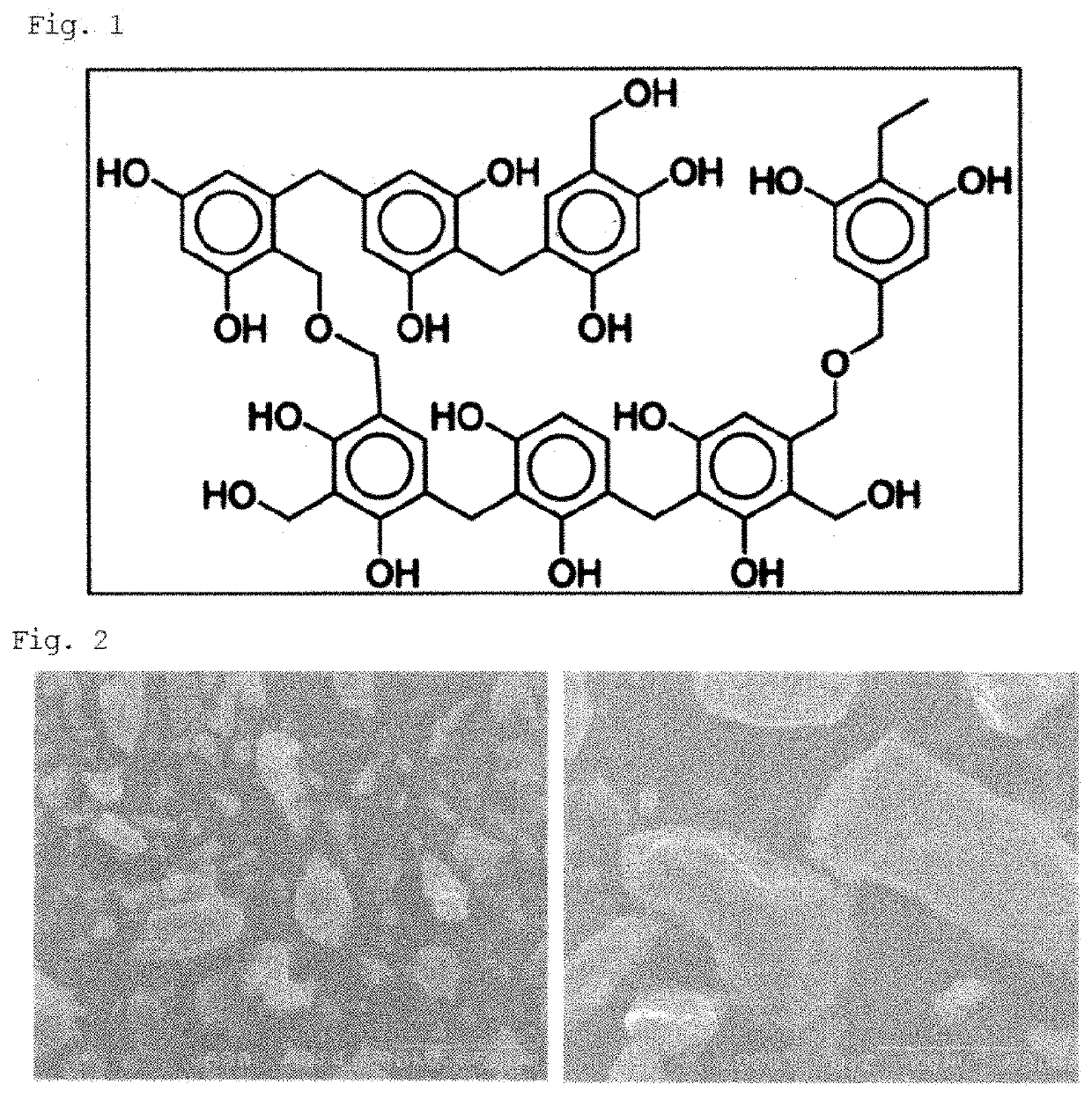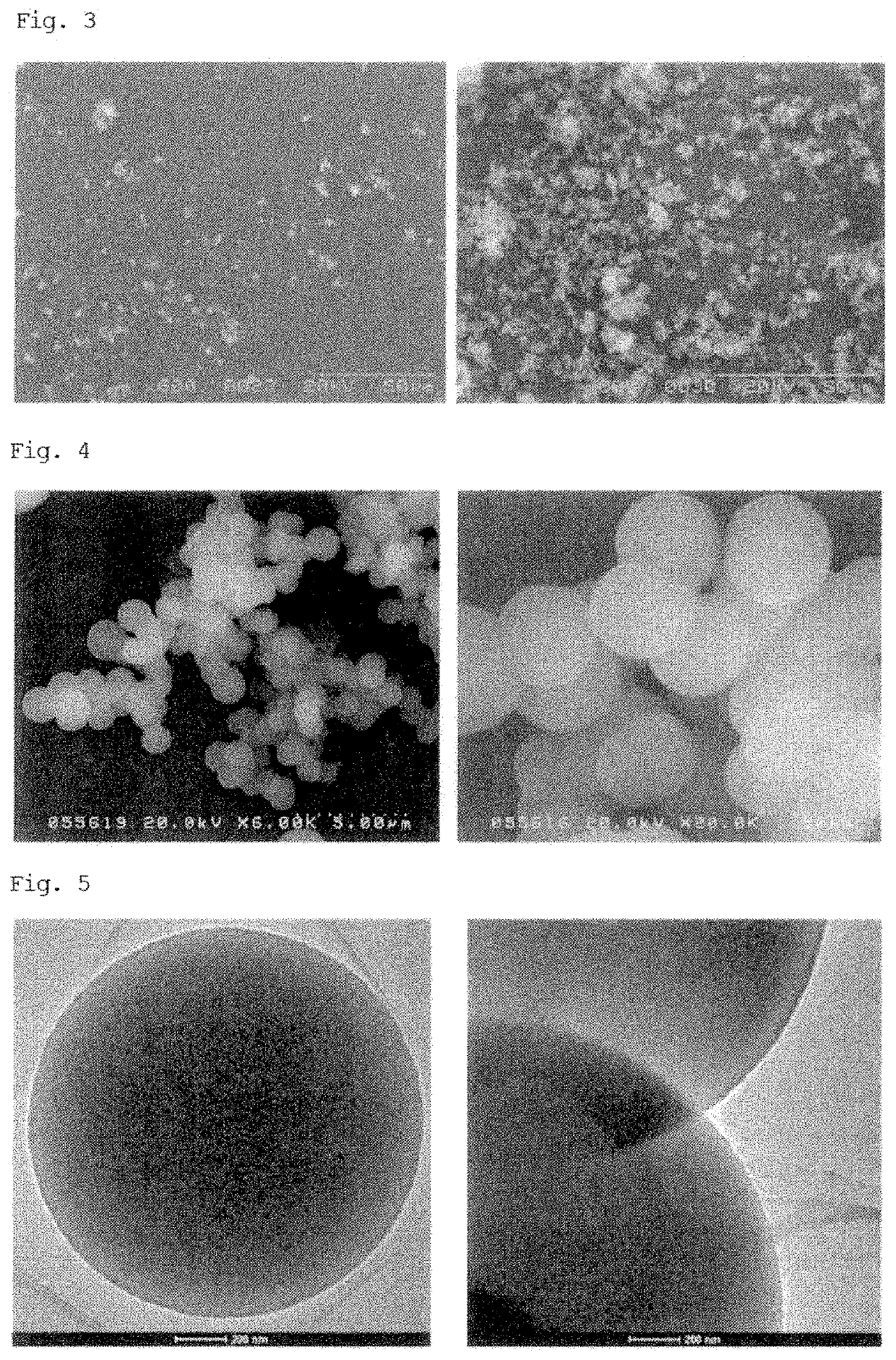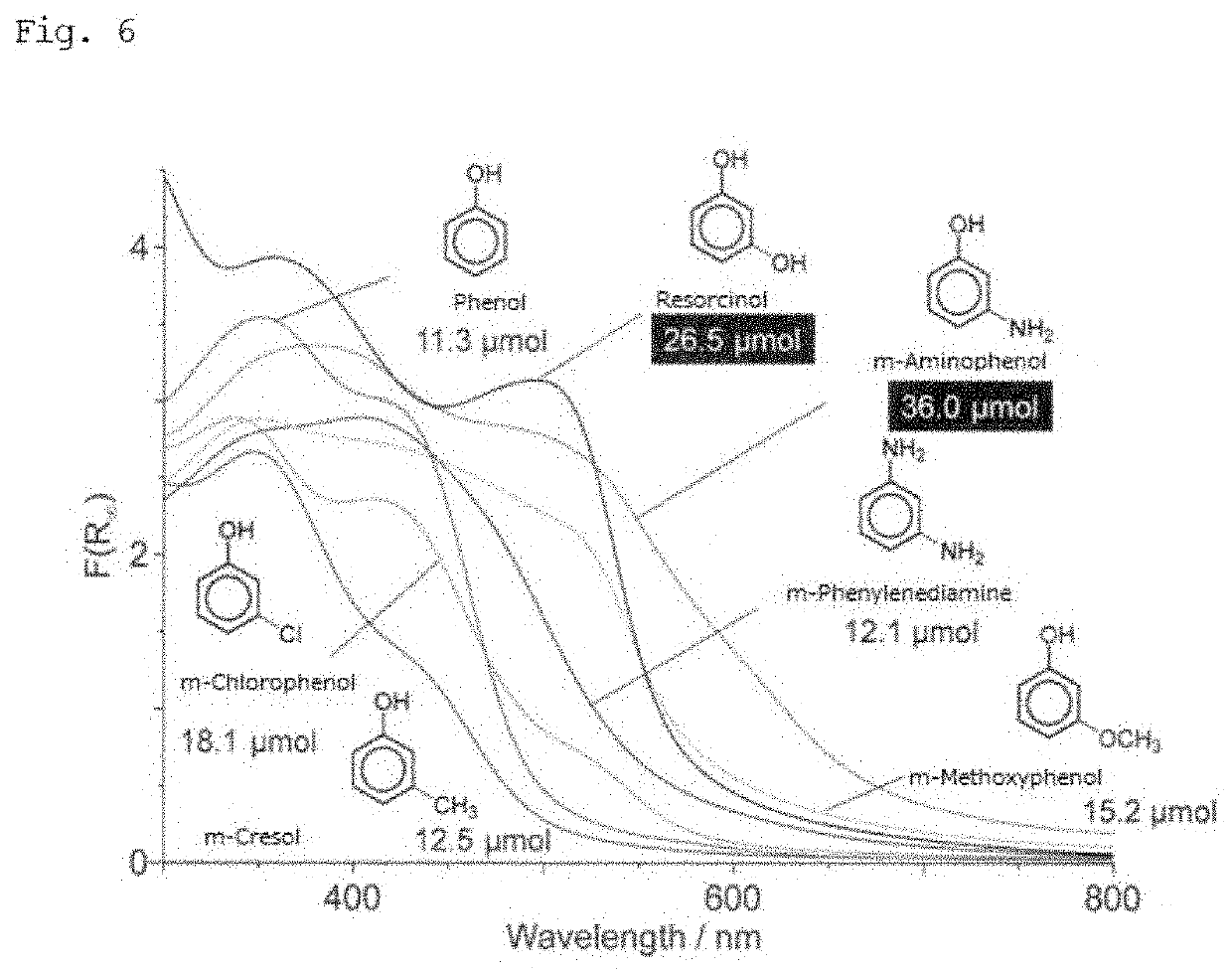Method for producing hydrogen peroxide, kit for hydrogen peroxide production, organic polymer photocatalyst used in said method and kit, and method for producing said organic polymer photocatalyst
a technology of hydrogen peroxide and hydrogen peroxide, which is applied in the direction of organic compounds/hydrides/coordination complex catalysts, physical/chemical process catalysts, chemical instruments and processes, etc., can solve the problems of increasing the price, difficult storage and delivery of dihydrogen (hsub>2/sub>), and increasing the risk of explosion, so as to achieve higher production efficiency and high safety
- Summary
- Abstract
- Description
- Claims
- Application Information
AI Technical Summary
Benefits of technology
Problems solved by technology
Method used
Image
Examples
preparation example 1 (
Synthesis of RF Resins Using Various Kinds of Base Catalysts)
[0066]400 mg of resorcinol, 612 mg of formaldehyde (R / F molar ratio (R / F ratio) of about 1 / 2), and 1.7 mmol of a base catalyst shown in Table 1 were added to a mixing solution containing 40 mL of water and 32 mL of ethanol.
[0067]In Entry 1, Na2CO3 (powder: 0.5 mg) was used as a base catalyst.
[0068]In Entry 2, NH3 (0.18 mL of 28% aqueous solution) was used as a base catalyst.
[0069]The solution was placed in a Teflon (registered trademark) container (capacity: 60 cc), and the container was set in a stainless steel autoclave. Subsequently, the autoclave was placed in an oven heated at 200° C., and allowed to stand (hydrothermal treatment) for 24 hours. The autoclave was then allowed to stand at room temperature for 30 minutes and cooled.
TABLE 1entrycatalystBET surface area / m2 g−1H2O2 / μmol1RF1 / 2 (Na2CO3)1.57.12RF1 / 2 (NH3)10.843.0
[0070]In Entry 1, the solution became a red massive solid (gel) when taken out from the autoclave. ...
preparation example 6 (
Synthesis of Photocatalyst by Use of Phenol or a Phenol Derivative)
[0103]In Entry 3 of Preparation Example 5, m-aminophenol, m-chlorophenol, m-methoxyphenol, m-cresol, m-phenylenediamine, and phenol were each used in place of resorcinol.
[0104]The photocatalyst activity of each obtained photocatalyst (including the photocatalyst synthesized by use of resorcinol as a reference) was evaluated by the method explained in Preparation Example 1. (Note that the light intensity in a range of 420 to 500 nm was 260.0 Wm−2.)
[0105]FIG. 6 shows the results of photocatalyst activity (production amount of H2O2) corresponding to phenol and each phenol derivative. The results of FIG. 6 indicate that photocatalyst activity can be obtained when phenol or any phenol derivative is used. FIG. 6 also indicates that m-aminophenol attains higher photocatalyst activity than resorcinol. This is presumably because m-aminophenol has an electron-donative functional group, as compared to resorcinol, and thus attai...
preparation example 7 (
Synthesis of RF Resin by Use of an Oxalic Acid as an Acid Catalyst)
[0106]Entry 1 of Preparation Example 7 was the same as Entry 4 of Preparation Example 5.
[0107]In Entry 2 to 7 of Preparation Example 7, RF catalysts were synthesized using an acid catalyst (oxalic acid) in the amount shown in Table 7 in place of the base catalyst. The conditions except for the use of acid catalyst were the same as for Entry 4 of Preparation Example 5.
TABLE 7Particle SizeentryCatalyst(nm)pHH2O2 (μmol)1RF1 / 2 / NH3 (1.7 mmol)—8.4861.62RF1 / 2 / (COOH)2 17 mmol1047.2 ± 71.4 2.1247.83RF1 / 2 / (COOH)2 8.5 mmol1097.6 ± 153.02.7485.34RF1 / 2 / (COOH)2 1.7 mmol1019.7 ± 142.22.9984.75RF1 / 2 / (COOH)2 0.85 mmol1165.9 ± 156.63.5285.96RF1 / 2 / (COOH)2 0.17 mmol1043.4 ± 143.44.1886.77RF1 / 2 / (COOH)2 0.01 mmol1135.9 ± 114.85.5686.1
[0108]The results of Table 7 indicate that the use of acid catalyst in a suitable amount as shown in Entry 3 to 7 allows the obtained RF resin to have higher photocatalyst activity than those obtained by the ...
PUM
| Property | Measurement | Unit |
|---|---|---|
| pH | aaaaa | aaaaa |
| particle size | aaaaa | aaaaa |
| particle size | aaaaa | aaaaa |
Abstract
Description
Claims
Application Information
 Login to View More
Login to View More - R&D
- Intellectual Property
- Life Sciences
- Materials
- Tech Scout
- Unparalleled Data Quality
- Higher Quality Content
- 60% Fewer Hallucinations
Browse by: Latest US Patents, China's latest patents, Technical Efficacy Thesaurus, Application Domain, Technology Topic, Popular Technical Reports.
© 2025 PatSnap. All rights reserved.Legal|Privacy policy|Modern Slavery Act Transparency Statement|Sitemap|About US| Contact US: help@patsnap.com



